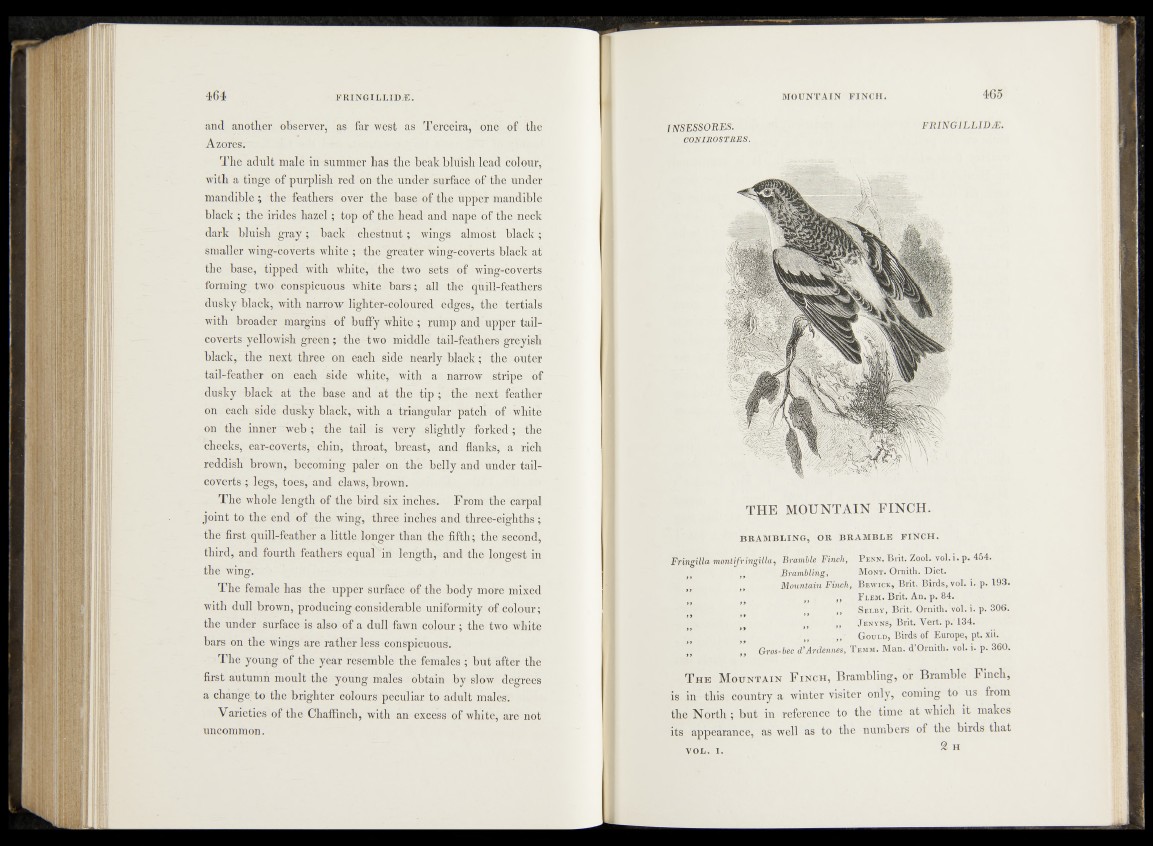
and another observer, as far west as Terceira, one of the
Azores.
The adult male in summer has the beak bluish lead colour,
with a tinge of purplish red on the under surface of the under
mandible ; the feathers over the base of the upper mandible
black ; the irides hazel; top of the head and nape of the neck
dark bluish gray; back chestnut; wings almost black;
smaller wing-coverts white ; the greater wing-coverts black at
the base* tipped with white, the two sets of wing-coverts
forming two conspicuous white bars; all the quill-feathers
dusky black, with narrow lighter-coloured edges, the tertials
with broader margins of buffy white ; rump and upper tail-
coverts yellowish green; the two middle tail-feathers greyish
black, the next three on each side nearly black; the outer
tail-feather on each side white, with a narrow stripe of
dusky black at the base and at the tip ; the next feather
on each side dusky black, with a triangular patch of white
on the inner web; the tail is very slightly forked; the
cheeks, ear-coverts, chin, throat, breast, and flanks, a rich
reddish brown, becoming paler on the belly and under tail-
coverts ; legs, toes, and claws, brown.
The whole length of the bird six inches. From the carpal
joint to the end of the wing, three inches and three-eighths;
the first quill-feather a little longer than the fifth; the second,
third, and fourth feathers equal in length, and the longest in
the wing.
The female has the upper surface of the body more mixed
with dull brown, producing considerable uniformity of colour;
the under surface is also of a dull fawn colour ; the two white
bars on the wings are rather less conspicuous.
The young of the year resemble the females ; but after the
first autumn moult the young males obtain by slow degrees
a change; to the brighter colours peculiar to adult males.
Varieties of the Chaffinch, with an excess of white, are not
uncommon.
INSESSORES. F R ING IL LIDÆ .
CONIROSTRES.
TH E MOUNTAIN F IN CH .
B B A M B L IN G , OR B R A M B L E F IN C H .
Fringilla montifringilla, Bramble Finch, P enn. Brit. Zool. vol.i. p. 454.
Brambling, M ont. Ornith. Diet.
Mountain Finch, B ewick, Brit. Birds, vol. i. p. 193.
tt ,, F lem. Brit. An. p. 84.
,, S elby, Brit. Ornith. vol.i. p. 306.
‘ „ J enYNS, Brit. Vert. p. 134.
,, G ould, Birds of Europe, pt. xii.
Gros-bec d’Ardennes, T emm. Man. d’Ornith. vol. i. p. 360.
T h e M o u n t a i n F i n c h , Brambling, or Bramble Finch,
is in this country a winter visiter only, coming to us from
the North ; but in reference to the time at which it makes
its appearance, as well as to the numbers of the birds that
% h v o l . I